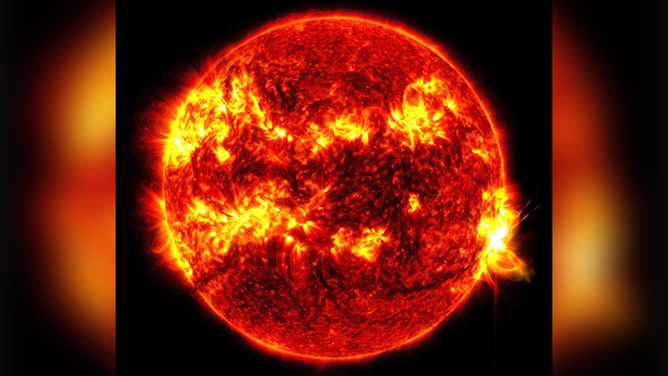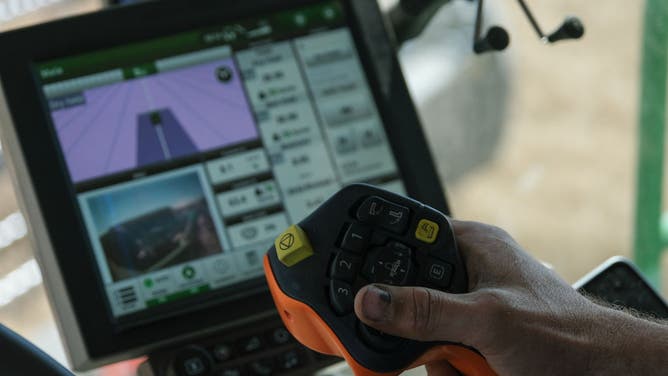Extreme solar storms took tractors in circles while farmers were planting crops
NOAA’s Space Weather Prediction Center is still determining the full impacts across multiple industries of the recent extreme geomagnetic storms. Some farmers had to suspend operations during the most extreme geomagnetic storm in 20 years.
NOAA issues 'severe' Geomagnetic Storm Watch
May 2024 file video: A "severe" geomagnetic storm is now in progress, according to NOAA's Space Weather Prediction Center, raising hopes for a dazzling display of the Northern Lights on Friday night while also putting infrastructure operators on guard for potential electrical effects from the solar event.
U.S. farmers trying to plant crops were sent in circles in May when extreme geomagnetic storms disrupted the precise navigation system used to put down rows of seeds.
Solar storms between May 10 and 12 produced the first G5 geomagnetic storm, the most extreme on NOAA's space weather scale, in 20 years, creating Northern lights in the southern U.S. However, the beautiful dancing lights are only one aspect of space weather. Geomagnetic storms can disrupt the power grid, communications, airline systems and satellite systems that allow farmers – and everyone else – to use GPS.
NOAA’s Space Weather Prediction Center is still determining the full impacts across multiple industries of the recent extreme geomagnetic storms, said SWPC Service Coordinator Shawn Dahl.
SUN'S ACTIVE REGIONS MAKE 'RARE' RETURN WITH MORE STRONG GEOMAGNETIC STORMS POSSIBLE IN JUNE
"We're still trying to understand more, to corroborate some things or find out if they were just coincidental in nature," Dahl said. "But some things I can share so far are the satellite community, especially low Earth-orbiting satellites, they were extremely busy during this event, maintaining the proper orbital levels."
The recent extreme space weather is tied to active regions of sunspots as the Sun approaches the most active period in its 11-year cycle, known as the solar maximum.
Dahl said space weather forecasting has improved greatly in the past decade to prevent outages in the power grid and other industries, but things still leak through.

This image shows a massive solar flare exploding from the Sun on Tuesday, May 14, 2024.
(@NASASun/X / NASA)
Dahl said that during the May 10-12 geomagnetic storms he heard in real-time from farmers in North Dakota who were experiencing the effects of space weather firsthand as they attempted to plant crops.
"They were among those … out driving their tractors, trying to do precision action with their GPS-guided tractors," Dahl said. "They're supposed to be accurate within a centimeter. They were off by 10 feet. It was taking them in circles, doing weird things."
NOAA’S NEWEST GOES SATELLITE LAUNCHING DURING BUSY SEVERE WEATHER SEASON, SPACE WEATHER
Spring is the planting season for many crops harvested in the fall, including corn, soybean, wheat and cotton.
He was told farmers had to suspend operations until the effects of the solar storm were over.

File photo: A farmer operates a combine that uses GPS to harvest wheat in Culver, Kansas, US, on Wednesday, June 29, 2022. Photographer: Arin Yoon/Bloomberg via Getty Images
After the geomagnetic storm had passed, Dahl said farmers were still dealing with the effects a day later.
"Even then, space weather was back to haunt them a night or two later," he said. "Even though the storm was done, it changed the structure of the ionosphere so much it was going to take a while for that to come back to normal, so it was still messing with some of the signals at certain times of the day."
Between May 10 and 11, John Deere posted a series of messages on its LandMark Implement customer portal about the geomagnetic storm affecting GPS signals.
"The storm has affected all brands of GPS, not solely John Deere," the company wrote on May 11. "We are in search of tools to help predict this in the future so that we can attempt to give our customers an alert that this issue may be coming. We do believe this is a historic event, and it isn’t something that we are going to have to continue to battle frequently."
The active space weather isn't over. More strong solar flares and associated coronal mass ejections are likely through the rest of this year and into early 2025, according to space weather forecasters.
